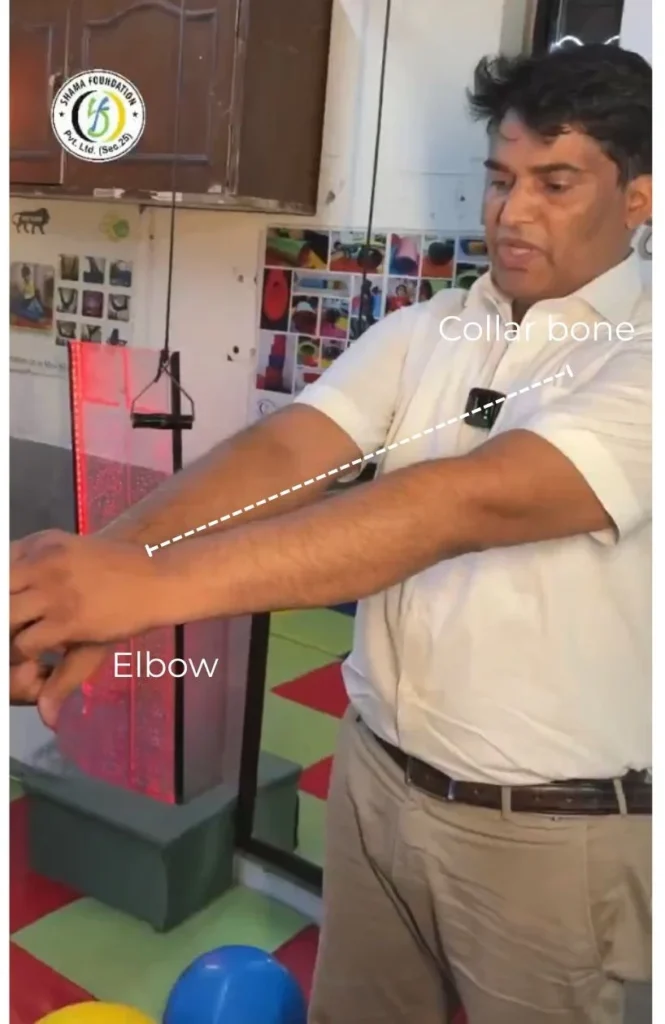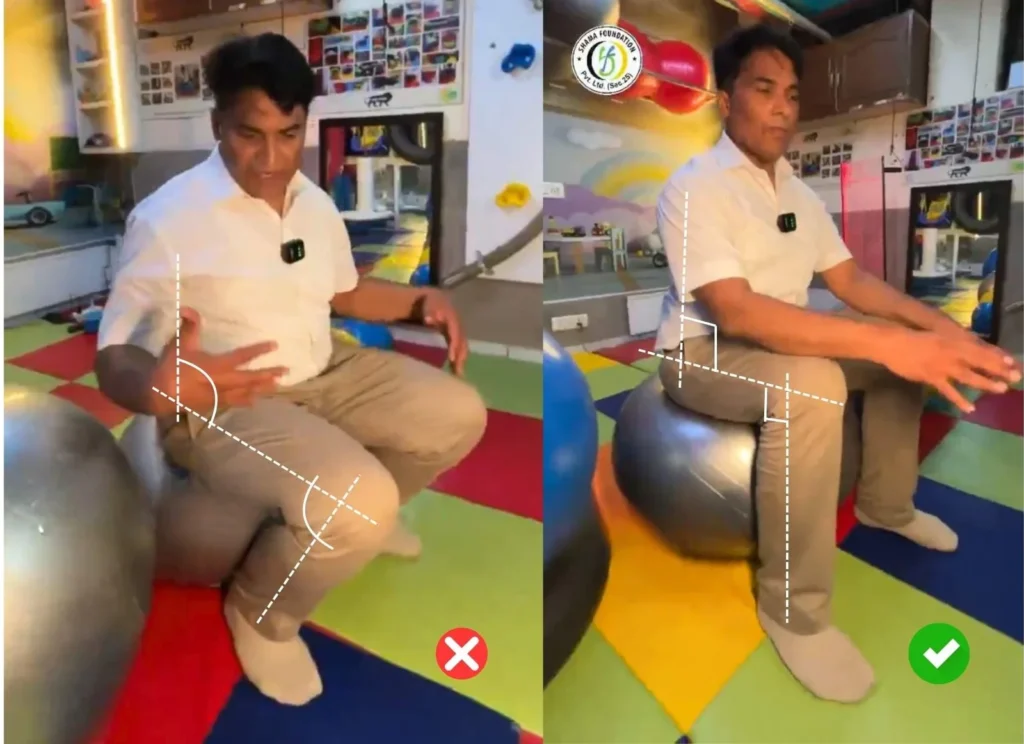Differently abled children, those who have difficulty with sitting balance ( cerebral palsy, a child with abnormal muscle tone). Can be benefited by using a therapy ball (gym ball) in an effective way to develop their sitting balance.
One question that frequently comes to mind for many parents is: “What size exercise ball should I purchase, which can help to develop my child’s sitting balance?”
In this article, we will address this important topic and provide you with research-based guidelines to make the right choice.
How to Choose the Right Therapy Ball for Children with Cerebral Palsy | Sitting Balance Guide
The 90-Degree Rule for Sitting Balance in Children
When we are trying to develop the sitting balance in kids, we have to follow the 90-degree rule. That means the main joints of the hip and lower limb should be at a 90-degree angle. It should not be less than or more than this angle.
So, let me explain what it means.
When we are giving therapy to develop sitting balance on a therapy ball, the ideal position of a child on the therapy ball, to have their ankles, knees, and hips all at 90-degree angles.
This position ensures that when the child is sitting, the child’s centre of gravity falls in front of the child. If it is behind the child, then it negatively impacts the spine, and the child may tend to slide backwards and fall.
This positioning creates the optimal foundation for developing core strength and balance.

The process of finding the right ball size is straightforward. Here’s a simple method to determine the ideal diameter:
- Have your child fold their arm straight out from their body as shown in the figure.
- Measure the distance from their sternum (breastbone) to their wrist
- This measurement should equal the diameter of the exercise ball
This measurement technique ensures that when sitting on the ball, your child will naturally achieve those important 90-degree angles at the ankles, knees, and hips.
Therapy Ball Sizing Demo: Watch How to Check the 90-Degree Angles

Let me share a personal example. If I want to develop my own sitting balance and core strength, I need to follow the same principles.
When I sit on a ball that’s too small or too large, my body can’t maintain those critical 90-degree angles. My ankles, knees, and hips end up at awkward angles that don’t support proper posture or effective balance development.
However, when I sit on a ball of the perfect diameter—where the distance from my sternum to my wrist matches the ball’s size—my body naturally aligns with ankles, knees, and hips all at 90-degree angles.
This position creates the ideal foundation for stability exercises and balance development.
Benefits of a Properly Sized Therapy Ball for Special Needs Kids
Using an appropriately sized exercise ball offers numerous benefits:
- Promotes proper posture from an early age
- Strengthens core muscles as the body works to maintain balance
- Improves proprioception (awareness of body position in space)
- Enhances coordination through gentle, controlled movements
- Makes therapy exercises more engaging for children
Final Tips: Choosing the Right Therapy Ball for Your Child’s Needs
Selecting the right size Therapy ball makes a significant difference in the effectiveness of balance training. By following the guidelines shared in this article—ensuring your child’s ankles, knees, and hips form 90-degree angles when seated—you’ll create the optimal environment for developing strong sitting balance.
At Sama Foundation, we’re committed to providing evidence-based guidance for your child’s development. For more information or personalised advice, please reach out to qualified therapists nearby, or you can approach our team of pediatric therapists.
Frequently Asked Questions
Q: What size therapy ball should I use for my child with cerebral palsy?
A: Measure from your child’s sternum to their wrist—this equals the ideal ball diameter. This ensures their hips, knees, and ankles form 90-degree angles for proper sitting balance.
Q: How does a therapy ball help a child with sitting balance?
A: A therapy ball strengthens core muscles, improves posture, and enhances proprioception (body awareness). The unstable surface forces small adjustments, building balance over time.
Q: Can a therapy ball help a child with low muscle tone?
A: Yes! The gentle instability of the ball activates core muscles, making it ideal for kids with hypotonia (low muscle tone). Always supervise and start with short sessions.
Q: What’s the 90-degree rule for sitting on a therapy ball?
A: The 90-degree rule means your child’s hips, knees, and ankles should each bend at 90° when seated. This aligns their center of gravity for safe, effective balance training.
Q: Where can I buy a therapy ball for my special needs child?
A: Look for anti-burst gym balls (55cm–75cm diameter) on Amazon, therapy supply stores, or medical equipment providers. Ensure it’s sized correctly using the sternum-to-wrist method.

